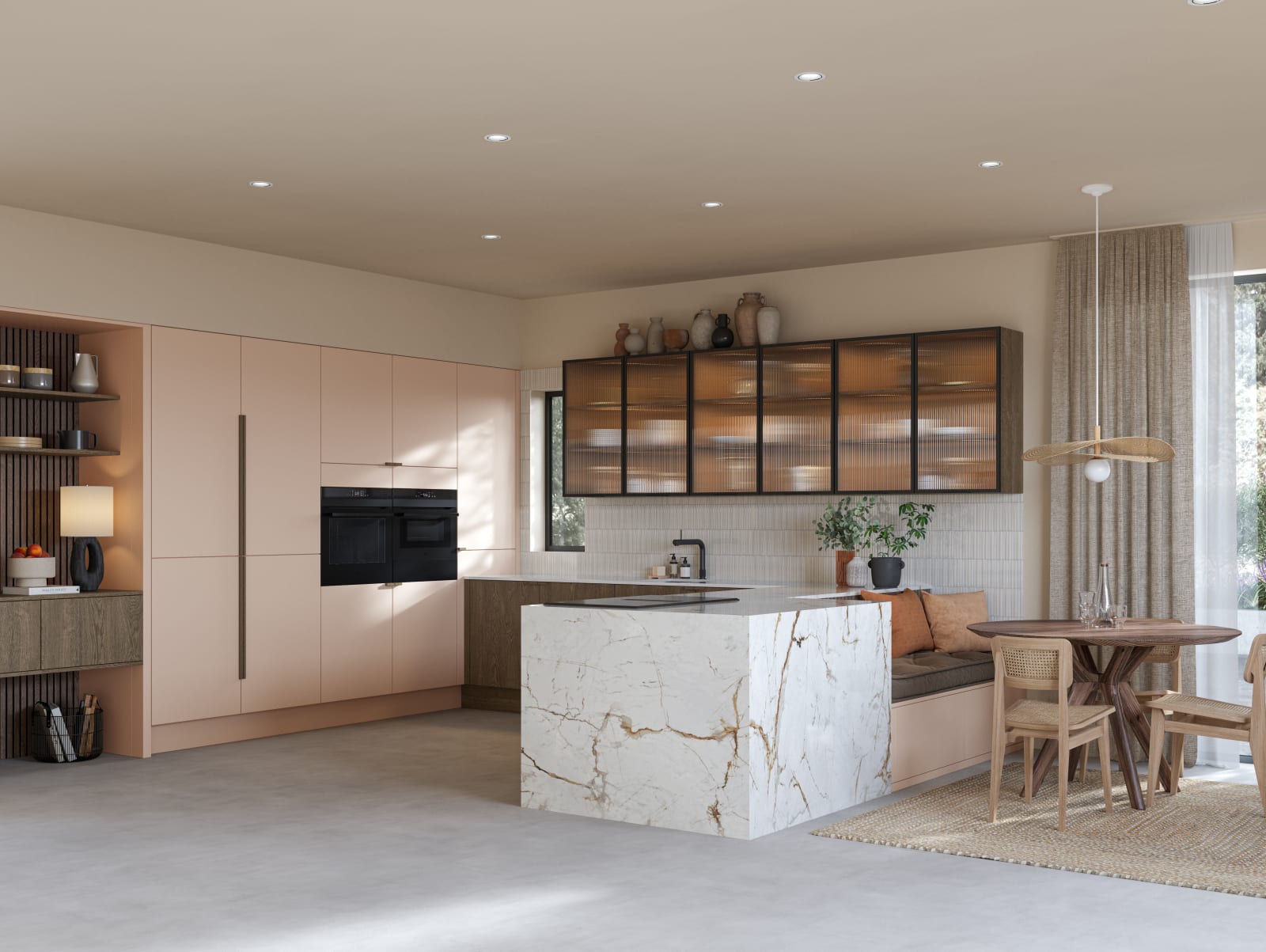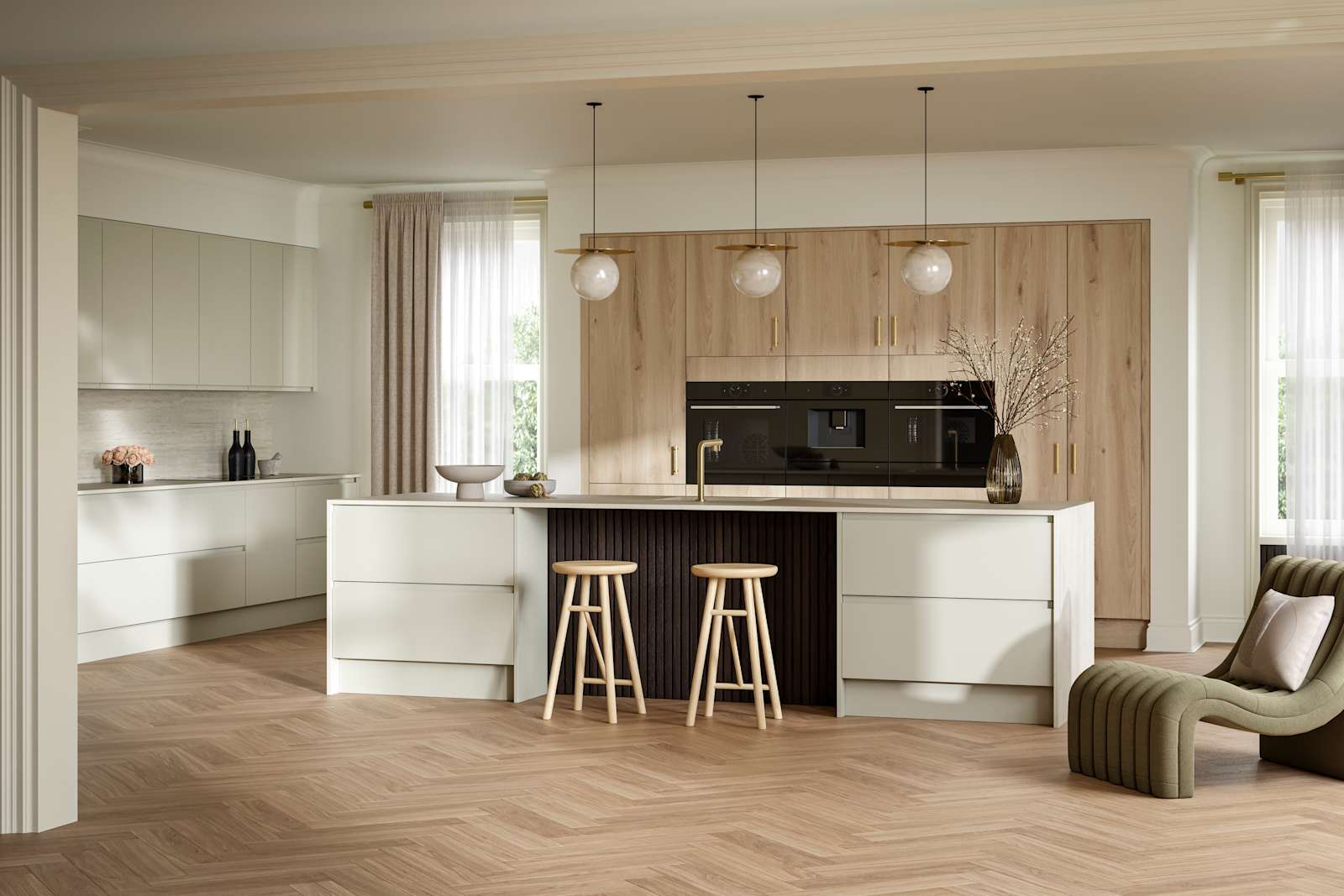How to separate an open floor plan in your kitchen
It’s easy to see why open plan living has dominated home design for decades. These spacious, light-filled environments create a unique sense of flow and connection.
But whether you want to hide the chaos of meal prep from dinner guests, create distinct zones for different activities or add architectural interest, separating an open floor plan can have its benefits too. By cleverly dividing your open space, you can get the best of both worlds.
How to separate kitchen from living room: Subtle techniques
Sometimes, a mere suggestion of division is all you need to create distinct zones in an open-plan space. These approaches maintain the open feel while creating visual boundaries.
Play with flooring transitions
A change in flooring material creates an immediate visual cue that you're moving from one zone to another. Consider:
- Hardwearing flooring for kitchen areas transitioning to warm wood for living spaces
- A subtle level change with a single step down (or up)
- Contrasting area rugs to define seating arrangements

Duxbury Fawn kitchen with separate dining area

Brunswick Black Sumi kitchen
Shift your colour palette
Colour is one of the most impactful ways to create distinction. Try:
- Using contrasting tones for cabinetry and walls (see this technique in action with our Brunswick kitchen range in Sumi Black)
- Painting an accent wall that signals the beginning of a new zone
- Breaking up neutral palettes with boldly coloured statement pieces
Strategic lighting schemes
Lighting helps create clear zones for different uses, and can imbue a space with a specific mood. Consider:
- Pendant lights hanging over a kitchen island or dining table (seen below with our Ludlow kitchen range)
- Warm, ambient floor and table lamps in living areas
- Task lighting concentrated in work zones
- Adjustable lighting systems that can unite or separate spaces with the flick of a switch

Ludlow Limestone kitchen with pendants

Nova Matt Seagrass kitchen
Ideas to separate kitchen and living room: Making a statement
For more definitive boundaries, these techniques create clearer separation between areas while maintaining an open concept.
Half walls and pony walls
A wall that doesn't reach the ceiling offers division without sacrificing light flow. Top half walls with a worktop create functional separation, while adding decorative elements like planters or sculptural objects enhance the division. You can also incorporate storage within the wall for dual functionality.
Statement islands
Aside from their practical uses, islands act as architectural features that naturally delineate space. An oversized island with a dining extension, or a peninsula extending from a wall, helps create a natural border between areas.
Sliding doors and room dividers
When you want more complete separation, consider options like pocket doors that disappear into walls when not needed or glass panel dividers that maintain visual connection while blocking cooking smells.

Ludlow Morello with Ludlow Parchment kitchen island

Brunswick Voyage Blue cabinetry and kitchen island
How to divide kitchen and living room with furniture
Strategic furniture placement can define spaces without permanent modifications.
Position the back of your sofa toward the kitchen to establish a clear living room boundary. A console table behind the sofa creates a gentle buffer zone and provides a surface for lamps or decorative items.
A dining table also acts as a natural bridge between cooking and relaxation zones. Round tables soften the transition between rectangular kitchen units and living spaces, while counter-height tables create continuity with kitchen worktops.
Ideas for creating separation in other open plan areas
Kitchen and dining separation
- A kitchen island with an integrated dining table at a lower height
- A change in ceiling treatment, such as exposed beams over the dining area
- A large pendant light or cluster of lights centred over the dining table
Kitchen and hallway division
- A console table or storage unit creating a transitional drop zone
- A change in wall treatment or panelling
- A decorative screen that provides glimpses between spaces

Ludlow Morello hallway cabinets with matching wall panel

Soho Chalk Blush with separated seating area
Tips for maintaining flow while creating boundaries
Dividing open spaces is about creating distinction without disconnection:
- Maintain sight lines at eye level to preserve spaciousness
- Keep shared elements (like flooring or colour accents) that tie spaces together for continuity
- Ensure natural light can still flow throughout all areas.
- Think about how sound travels and incorporate soft furnishings to absorb noise
Transform your space
Whether you're looking to create subtle visual cues or more definitive boundaries in your open plan kitchen, the key is striking the right balance between separation and connection. The perfect solution will reflect both your practical needs and aesthetic preferences.





























